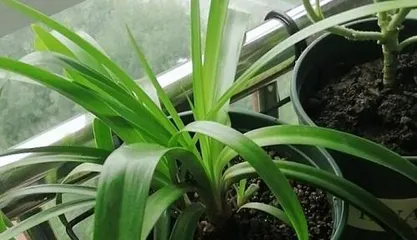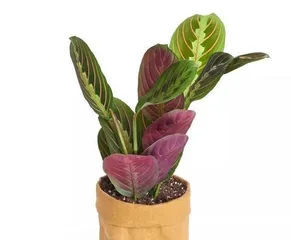Calathea is a beautiful indoor plant with ornamental value and air-purifying effects. However, when the temperature drops in winter, Calathea is susceptible to frost damage. To ensure Calathea grows healthily, we need to take some measures to protect it.

Understanding the characteristics of Calathea
Calathea prefers a warm and humid environment and has high temperature requirements, with an optimal growth temperature of 18-30°C. In winter, if the ambient temperature drops below 10°C, it is prone to frost damage.
Regulate indoor temperature
To prevent Calathea from freezing to death, we need to regulate the indoor temperature. In winter, try to keep the indoor temperature between 18-25°C. If it feels too low, you can use heaters or other heating equipment, but be mindful of safety.

Avoid placing it near windows
In winter, the temperature near windows is lower than the indoor temperature, so it is not suitable for placing Calathea there. If you must place it near a window, you can add an insulation layer next to the window or wrap the potting soil with heat-preserving materials to maintain its temperature.
Control the amount of watering
In winter, due to lower indoor temperatures, Calathea's growth rate will slow down, so the amount of watering should also be reduced accordingly. Avoid overwatering, which can prevent water from draining and cause root rot.
Increase air humidity
In winter, indoor air humidity is low, which can easily lead to dry leaves on Calathea. You can increase air humidity by using a humidifier or placing some moist pebbles or perlite at the bottom of the pot.

Mist regularly
You can regularly mist with a spray bottle to increase air humidity, clean the leaf surface, and promote photosynthesis.
Control the amount of fertilization
In winter, Calathea's growth rate slows down, so excessive fertilization is not necessary. You can appropriately reduce the amount of fertilizer, generally applying an organic fertilizer once a month is sufficient.
Prune in time
Winter is the dormancy period for Calathea. If too many leaves grow, it will consume nutrients. You need to prune overly long leaves and dead leaves in time to ensure the healthy growth of the plant.
Pay attention to pest and disease control
The dry climate in winter can easily lead to pests and diseases on Calathea, such as aphids and spider mites. Pay attention to regularly checking whether the plant is infested by pests and diseases, and take corresponding preventive and control measures.
Avoid cold drafts
In winter, opening windows and doors may allow cold air to blow in, which can easily cause frost damage to Calathea. Try to avoid opening windows and doors as much as possible.
Move to a warmer location
If the indoor temperature cannot be maintained within a suitable range, you can consider moving Calathea to a warmer indoor location, such as the living room or bedroom.
Avoid direct sunlight
In winter, the sunlight is weaker, but you should still avoid exposing Calathea to direct sunlight. If the sunlight is too strong, it can easily cause leaf scorch and affect the plant's growth.
Pay attention to ventilation
Indoor ventilation is necessary, but also be careful not to let Calathea face the air vent directly, as it can easily lead to leaf withering.
Use a combination of methods
The above measures can be used in combination to better protect Calathea from frost damage.
Winter is a critical period for Calathea. To ensure it grows healthily, we need to take measures to protect it. Attention must be paid to aspects such as regulating indoor temperature, increasing air humidity, and preventing and controlling pests and diseases. Only by comprehensively applying these measures can Calathea grow strong and healthy.